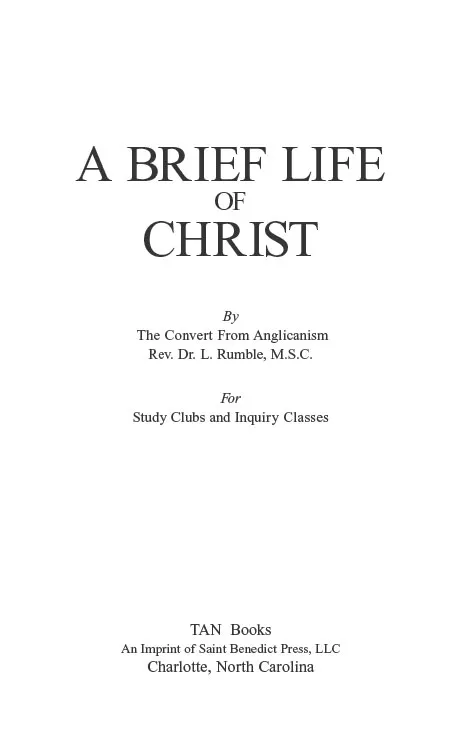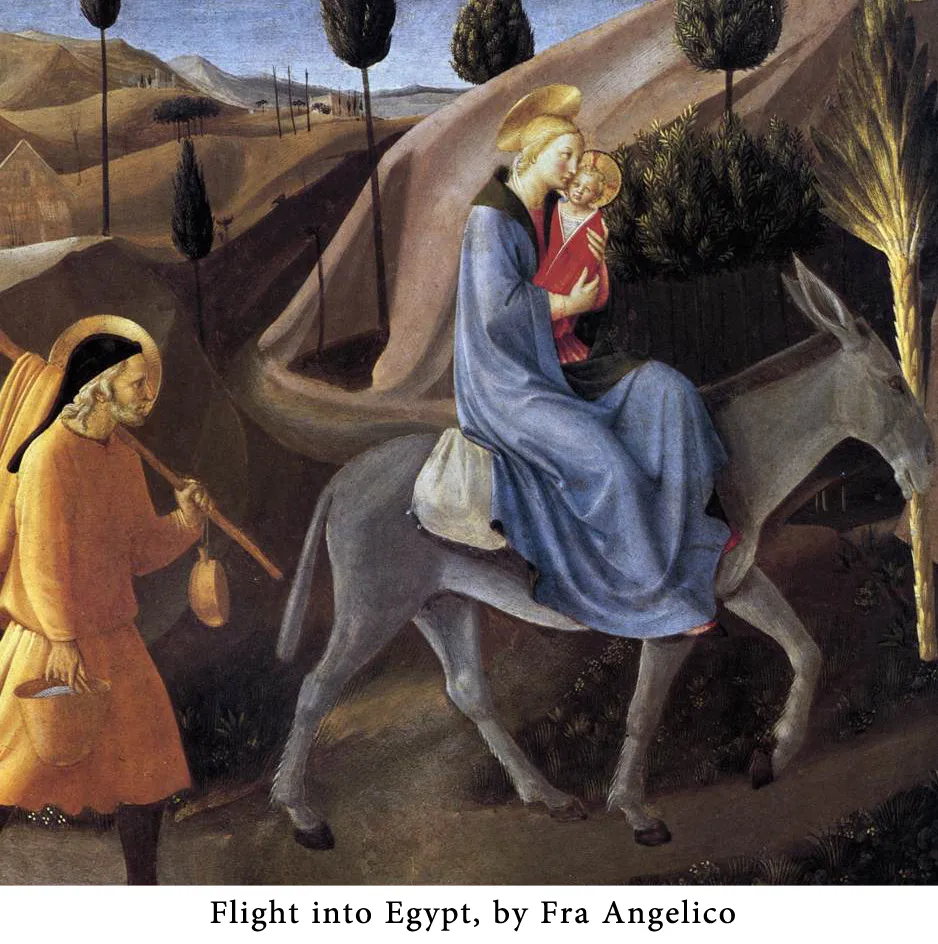
This is a test
- 205 pages
- English
- ePUB (mobile friendly)
- Available on iOS & Android
eBook - ePub
Book details
Book preview
Table of contents
Citations
About This Book
Commissioned by Our Lord Himself to preach His Gospel, St. Vincent began at age 50 an apostolate of preaching that would extend to France, Italy, Spain, Belgium, Switzerland, Austria, Germany and a few other countries as well. Travelling with him were as many as 10, 000 people, including at least 50 priests. The throngs that gathered to hear him came from many miles around, such that he was forced to preach in the open--no church being large enough to hold all the people. Impr. 205 pgs, 12 Illus.,
Frequently asked questions
At the moment all of our mobile-responsive ePub books are available to download via the app. Most of our PDFs are also available to download and we're working on making the final remaining ones downloadable now. Learn more here.
Both plans give you full access to the library and all of Perlego’s features. The only differences are the price and subscription period: With the annual plan you’ll save around 30% compared to 12 months on the monthly plan.
We are an online textbook subscription service, where you can get access to an entire online library for less than the price of a single book per month. With over 1 million books across 1000+ topics, we’ve got you covered! Learn more here.
Look out for the read-aloud symbol on your next book to see if you can listen to it. The read-aloud tool reads text aloud for you, highlighting the text as it is being read. You can pause it, speed it up and slow it down. Learn more here.
Yes, you can access St. Vincent Ferrer by Rev. Fr. Andrew Pradel, O.P. in PDF and/or ePUB format, as well as other popular books in Theology & Religion & Christian Denominations. We have over one million books available in our catalogue for you to explore.
Information
Topic
Theology & ReligionSubtopic
Christian Denominations



| Imprimatur: |  | Joannes Gregorius Murray |
| Archiepiscopus Sancti Pauli | ||
| Paulopoli die 17a maii 1956 |
Copyright © 1974 by TAN Books, an Imprint of Saint Benedict Press, LLC.
Originally published by Fathers Rumble and Carty, Radio Replies Press, Inc., St. Paul, Minn., U.S.A.
Retypeset and republished in 2010 by TAN Books.
Complete and unabridged.
ISBN: 978-0-89555-096-5
Printed and bound in the United States of America.
TAN Books
An Imprint of Saint Benedict Press, LLC
Charlotte, North Carolina
2012
CONTENTS
Introductory
The Setting
Birth of Jesus
Childhood at Nazareth
John The Bapist
Jesus Begins His Ministry
Journey To Galilee
The Kingdom and the Apostles
Manifestations of Divine Power
Speaking in Parables
Increasing Popularity
Death of John the Baptist
Miracles of the Loaves
The Bread of Life
Peter the Rock
Training of the Twelve
Visit to Jerusalem
Clash with the Pharisees
Judean Ministry
The Supreme Declaration
Raising of Lazarus
Last Missionary Days
Banquet at Bethany
Palm Sunday
Second Cleansing of the Temple
Day of Questions
Judas the Betrayer
The Last Supper
Arrest and Trial
Death on Calvary
Risen and Living Still
INTRODUCTORY
Jesus Christ, whose first name means “Saviour” and whose second name means “Anointed” or “Consecrated,” was born, not when our calendar says He was, but about six years earlier.
Our present calendar was drawn up by Dionysius Exiguus in the 6th century A.D., and we now know that he was some six years out in his calculations.
The mistake of Dionysius, of course, has nothing to do with the historical fact of Our Lord’s birth. It only means that what we thought of as, say, 1950 A.D., was really more like 1956 A.D.
For the actual facts about Christ we are mainly dependent upon the four gospels. These however have been subjected to an exhaustive examination such as no other documents have had to undergo, and their authenticity as documents is beyond reasonable dispute.
The authors were in a position to write thoroughly good history. Were the documents concerned with an ordinary man, and did they deal with none but ordinary utterances and events, no one would dream of doubting their reliability.
It is what they contain that unbelievers declare incredible; and that, only when the gospels mention things beyond the range of normal human experience. When they deal with all that belongs to the ordinary and natural sphere, research has shown them to be accuracy itself whether in regard to persons, places or things.
It is sheer prejudice against any religious revelation by God, and above all against the possibility of confirming such a revelation by miracles, which makes men regard the evangelists as either having taken leave of their senses, or else as having been positively dishonest, whenever they recorded as actual fact anything savoring of the supernatural or miraculous. These unbelievers have not approached the gospels with open minds, despite their boasting that they have done precisely that.
There is no room in this little book to discuss their position. Nor is there need to do so. It will be enough to set out briefly the life of Christ as depicted in the gospels, necessarily omitting much for purposes of condensation, but taking care in all that is said to remain strictly faithful to the basic facts recorded in our unimpeachable sources.
THE SETTING
Jesus was born in the little town of Bethlehem, in Palestine, a small country only 150 miles long and from 50 to 80 miles wide, on the extreme East coast of the Mediterranean Sea. Palestine, therefore, is only about half the size of the State of Indiana, in America.
It takes its name from the Philistines, a pagan people who settled on the coast of this country at about the same time as the Hebrews or People of Israel conquered the mountain land some 1300 years before the birth of Jesus.
At the time of His birth the People of Israel, called Jews after the main tribe of Juda, had themselves been conquered by the Romans. True, they had a king named Herod the Great; but he had been appointed by Rome and was subject to the Roman Emperor.
Herod the great died in 4 B.C., about two years after Jesus was born.
Then the Romans divided Palestine into four parts. One of Herod’s sons, Archelaus, was to rule over Judea and Samaria, in the South; another, Philip, was given Iturea in the North; a third son, Herod Antipas, ruled over Galilee in the Middle-West and Perea in the South-East; whilst Rome directly ruled over Decapolis, an area East of the Jordon.
When Jesus was a little boy of about twelve, Archelaus was deposed by the Romans for being too despotic, and Roman Governors were appointed instead, to rule over Judea and Samaria.
One of these Governors was Pontius Pilate, who was in charge from 26 A.D. until 36 A.D.
It was under Pontius Pilate that Jesus was to die.
The Jews were a religious people. All the nations around them were pagans, but they worshipped the one true God, carefully observing the laws given to them by Moses. The main centre of their worship was the great Temple in Jerusalem, the capital of Judea. In the different villages they had synagogues or meeting-places for prayer and the reading of the Scriptures; but sacrifice could be offered to God only in the one Temple at Jerusalem. Because of this, on great religious festivals thousands of Jews would flock there from all parts of Palestine, and even from other countries overseas.
Among the Jews there were several parties, two of which are very often mentioned in the gospels, the Pharisees and the Sadducees.
The Pharisees, or “Separated Ones,” claimed to observe the Mosaic Law perfectly, much better than the rest of the Jews. But whilst they were most exact outwardly, most of them were proud and very hard and uncharitable towards others. Not all were like that, of course. There were some really good, sincere and holy men among them.
The Sadducees, or “Descendants of Sadoc” (“Sadoc” means “Justice”), belonged to the richer classes. They were very worldly and, although they did not deny that the Law of Moses should be observed, they were not very strict about it. Many of them denied the existence of a future life and other orthodox teachings. Most of the Jewish priests belonged to these Sadducees.
The Jews, generally, were not very contented under the rule of the Romans; and as their religion taught them to look forwards towards a Messiah or divinely-sent Saviour, most of them hoped He would be a great political and military leader who would defeat the Romans and make themselves the greatest nation in the world.
Such was the setting in Palestine when Jesus was born in Bethlehem.
BIRTH OF JESUS
Most biographies of people begin with an account of their birth, and, perhaps, of their family history. But whilst the life of Jesus as born into this world began in Bethlehem, it cannot be said that He personally began to exist only then. Before the Incarnation, He had always lived in Heaven; and it would be impossible to get back to the beginning of His life there, for He is the Eternal Son of God. To be eternal is to be without a beginning at all! But that aspect of His life would take us beyond recorded history as the world knows it.
St. John’s gospel, however, tells us that one day He made this world, and indeed the whole universe, ages before He came into it Himself; and when He did come into our midst as Man to redeem and save us, He told us that He still belonged to Heaven; and always He spoke of it as only one could speak who is perfectly familiar with everything there. We shall meet with many such utterances in the course of His life on earth within the framework of history, the aspect of His life with which this booklet is concerned.
We have already said that Herod the Great died in the year 4 B.C., according to our present calendar. Now about three years before that, there was living at Nazareth, a little town in the hills of Galilee, a young Jewish girl named Mary. In the same town there dwelt a carpenter named Joseph to whom she was betrothed, and to whom she was soon to bind herself in the final marriage ceremonies. Both Mary and Joseph belonged to the tribe of Juda and were descendants of King David, although they were in poor circumstances, as were so many others of David’s line.
One day, whilst Mary was alone at prayer, God sent the angel Gabriel to her with the tremendous news that the great Hope of Israel was to be fulfilled at last, and that she was to be the Mother of the Messiah. “Hail, full of grace, the Lord is with you,” the angel said, appearing before her. “The Holy Spirit will come upon you, and the power of the Most High will overshadow you. Therefore the Holy One to be born of you shall be called the Son of God.”
Mary replied: “Behold the handmaid of the Lord. Be it done unto me according to your word.” And in that moment Jesus was miraculously conceived in her womb. The Divine Son, eternally generated of the Divine Father in Heaven without a mother, was to be born in a human nature of a human Mother without the intervention of any earthly father.
This would be incredible were it a question of any ordinary person. But Jesus, the Child of Mary, was not an ordinary person. The study of His character and of His subsequent career in this world is enough to show this, and that a miraculous entry into this world is the most fitting and natural thing to be expected in His case.
Nor have we only Mary’s word for the fact of the miraculous conception of Jesus. The truth about it was independently revealed to Joseph. “Joseph, son of David,” an angel said to him also, “fear not to take Mary as your wife, for it is by the power of the Holy Ghost that she has conceived this child.
So the formalities of the marriage were completed; and when her time was come. Joseph having taken her to Bethlehem, she brought forth her Child there, in the village known as the city of David. They had gone there in obedience to a Decree of Caesar Augustus, the Roman Emperor, ordering all to report at that time in their home towns for purposes of a census.
Divine notification of the coming of the Messiah had already been given to Elizabeth, Mary’s cousin; and now that He had come, the fact was revealed to a little group of shepherds out on the nearby hills. Angels appeared to them, bringing them the news that “this day is born to you a Savior,” and delighting them with their lovely song of praise and consolation: “Glory to God in the Highest, and peace on earth to men of goodwill.” Needless to say, the shepherds went at once with great joy to visit Him.
Magi, or wise men from the East, came also, under heavenly guidance; but their coming alarmed the old king Herod the Great, who was half mad with suspicions of possible rivals in his last distraught days. As a precaution, he ordered the murder of all male children under two years of age in Bethlehem and its vicinity. But Joseph had been divinely warned to take the Child and His Mother to Egypt, in order to escape the slaughter.

CHILDHOOD AT NAZARETH
After the death of Herod in 4 B.C. the little family returned. Joseph had intended to settle at Bethlehem; but since the brutal Archelaus, one of Herod’s sons, had been appointed ruler of Judea, he thought it wiser to go back to Nazareth, in Galilee, which was under the control of another of Herod’s sons, Herod Antipas.
At Nazareth Jesus was brought up as a pious Jewish Child and He was the only Child. Those called “brothers and sisters” in the gospels were but cousins at most. It was customary among the Jews to call any relatives within the same tribe “brethren.”
From the age of six or seven, children would attend the local synagogue where they were taught their religion and the other ordinary subjects, reading, writing and simple arithmetic. Jesus became deeply versed both in Jewish traditions and in the Scriptures. In His discourses later on, quotations are to be found from many books of the Old Testament. Owing to the presence of so many Gentiles in Galilee, He would almost certainly have learned to speak Greek; but Greek philosophical and religious ideas contributed in no way towards His education. There are no traces of them in His later utterances.
Of the sheer goodness and virtue which reigned in that little home at Nazareth there is no need to speak. There, St. Luke tells us, “Jesus grew in wisdom and grace with God and men.”
One incident only is given us concerning the childhood of Jesus at Nazareth. Every year Joseph and Mary used to make the eighty-mile journey to Jerusalem for the Feast of the Passover, a great religious festival like our Easter, celebrati...
Table of contents
- Front Cover
- Half Title Page
- Title Page
- Copyright Page
- Dedication
- Contents
- Preface
- —Section One— From the Saint’s Birth to His Religious Profession. 1350–1368.
- —Section Two— From the Saint’s Religious Profession to His Call to A Miraculous Apostolate. 1368–1398.
- —Section Three— The Miraculous Apostolate of St. Vincent Ferrer. 1398-1419.
- —Section Four— The Virtues of St. Vincent Ferrer.
- —Section Five— The Marvelous Gifts Which Shone Forth in St. Vincent Ferrer.
- —Section Six— Death of St. Vincent Ferrer(1419).
- Notes
- A Collection of Classic Artwork
- A Brief Life of Christ
- Tan Classics
- Become a Tan Missionary!
- Share the Faith with Tan Books!
- Tan Books